Did you know that Utah is home to a fascinating variety of heron species? These elegant birds can be found in the state’s diverse wetlands, adding beauty and grace to the natural landscape. In this article, we will explore the different types of herons that call Utah their home, from the majestic great blue heron to the elusive green heron. Get ready to discover the wonders of Utah’s wetland birds and enhance your birdwatching adventures.
Great Blue Heron
The great blue heron is a magnificent wading bird that can be frequently observed in Utah’s wetlands. Standing at an impressive height of around 4 feet, these herons are known for their long legs, necks, and unmistakable dagger-like bills.
Year-round residents of Utah, great blue herons are commonly found near marshes, ponds, lakes, rivers, and shorelines. These wetland habitats provide them with ample opportunities to practice their remarkable feeding behaviors. While small fish make up their primary diet, they also consume amphibians, reptiles, small mammals, and even insects.
When it comes to nesting behaviors, great blue herons are gregarious and breed in large colonies. They construct their stick nests high up in trees near water sources, where they raise their young with diligent care.
Migratory patterns for great blue herons vary across their vast North American range. In Utah, however, they are largely sedentary birds, staying put throughout the year.
While these herons are currently listed as a species of least concern in terms of their conservation status, they face significant threats. Habitat loss and disturbance due to human activities continue to pose challenges to their population. As advocates for wetland conservation, it is essential for us to recognize the importance of preserving these valuable habitats to protect the great blue heron and other wetland birds.
Key Facts about the Great Blue Heron:
| Species | Conservation Status | Migratory Pattern |
|---|---|---|
| Great Blue Heron | Least Concern | Largely sedentary in Utah |
“Utah’s wetlands provide critical habitats for the great blue heron, allowing us to witness its majestic presence in our natural landscapes. Let’s join hands in protecting these wetlands to ensure the continued success of this remarkable species.” – Utah Wildlife Foundation
Green Heron
The green heron is a small, stocky heron species that can be found in wetlands across Utah. With its greenish upperparts and reddish-brown neck, the green heron is easily identifiable. These herons prefer sheltered wetlands with abundant vegetation, such as marshes, swamps, ponds, and slow-moving streams.
Green herons are known for their patient foraging behavior, where they stand motionless on shore or perch on branches, waiting to strike at small fish, frogs, insects, and other prey. They have a unique foraging strategy, using tools such as twigs, bread crusts, or insects themselves to lure fish to the surface.
When it comes to nesting behaviors, green herons build nests low in shrubs or other semi-aquatic vegetation. They lay 3-5 eggs per clutch, and both parents share the incubation duties. The young birds leave the nest when they are about 3 weeks old but may continue to be fed by their parents for several more weeks.
Despite being widespread, green heron populations have declined moderately due to wetland habitat loss and degradation. Conservation efforts are essential to protect their habitats and ensure the survival of this beautiful species in Utah’s wetlands.
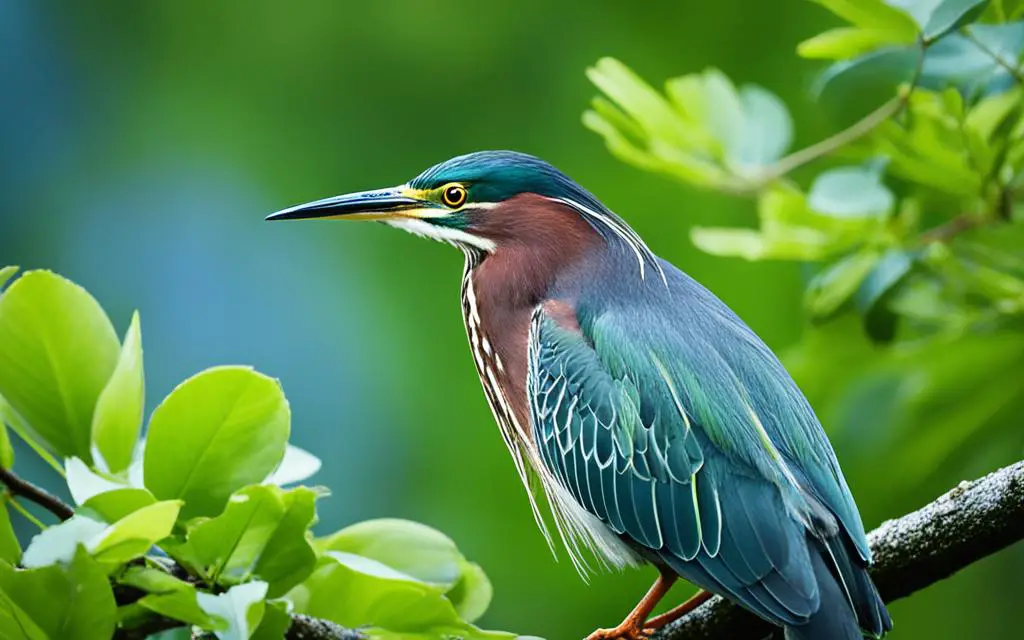
Did you know?
The green heron is one of the few bird species known to use tools. They have been observed using twigs, insects, or bread crusts to attract fish to the water’s surface, making it easier for them to catch their prey.
Black-crowned Night-Heron
The black-crowned night-heron is a medium-sized heron species that can be found in wetlands and waterways across Utah. These herons are most active at night or during dusk and dawn. They use a variety of aquatic habitats, including marshes, swamps, ponds, rivers, and lakes.
Black-crowned night-herons primarily feed on insects, small fish, crustaceans, amphibians, and reptiles. They are skilled hunters, using their sharp bills to catch their prey. These herons are known for their patient stalking behavior, patiently waiting for the perfect opportunity to strike.
When it comes to nesting, black-crowned night-herons are social birds that breed in colonies. They build nests of sticks and twigs, often in trees near water, creating a safe haven for their young. A typical clutch size consists of 3-5 eggs.
While the black-crowned night-heron is still a common species, its numbers have declined in some parts of North America due to habitat loss and degradation. Conservation efforts are crucial in order to protect the wetland habitats that these herons rely on for their survival.
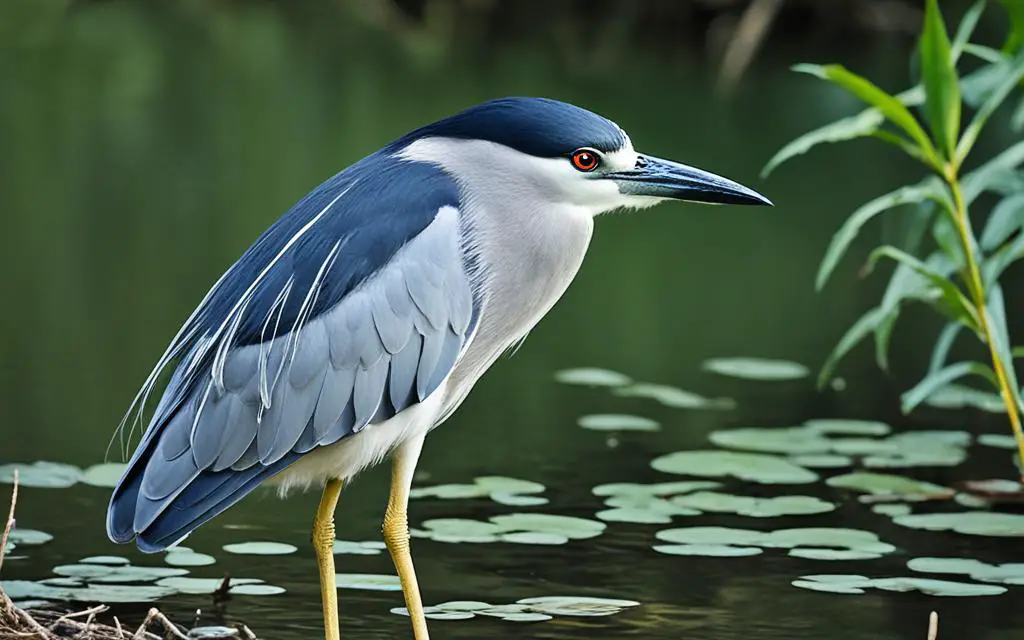
| Conservation Status | Habitat Loss | Habitat Degradation |
|---|---|---|
| Least Concern | Threatened | Threatened |
Yellow-crowned Night-Heron
The yellow-crowned night-heron is a moderately-sized heron species that can be found in freshwater and brackish wetlands across Utah. These herons have unique white or pale yellow plumes on their heads and gray upperparts. They inhabit marshes, swamps, mangroves, and shorelines, and primarily forage at night, feeding on insects, spiders, crustaceans, fish, frogs, reptiles, and small mammals.
Yellow-crowned night-herons nest colonially in trees and shrubs near water, laying 3-5 eggs per clutch. While their populations declined in the past due to hunting and wetland drainage, they have since rebounded.
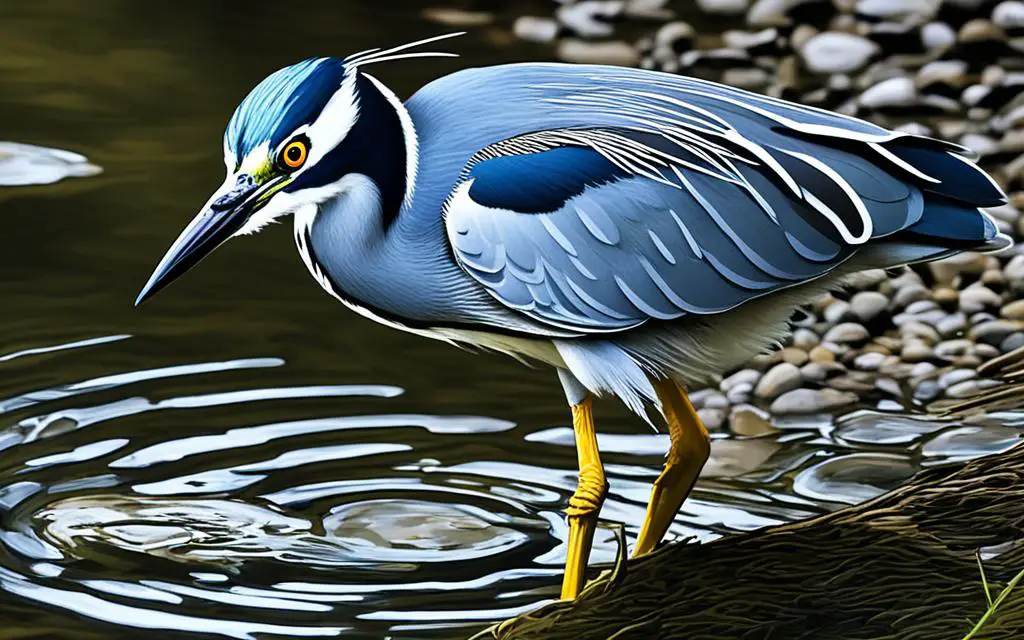
Conservation Status
The yellow-crowned night-heron is currently listed as a species of least concern by the International Union for Conservation of Nature (IUCN). Although their numbers have rebounded, habitat loss and degradation continue to be significant threats to the long-term survival of these herons. Conservation efforts aimed at preserving and restoring wetland habitats are crucial for the ongoing protection of yellow-crowned night-herons in Utah.
| Scientific Name | Common Name | Conservation Status |
|---|---|---|
| Nyctanassa violacea | Yellow-crowned Night-Heron | Least Concern |
Cattle Egret
The cattle egret is a small white heron that can be found across Utah, often near grazing livestock. These elegant wading birds have a unique association with domestic cows and other livestock, as they forage on insects that are flushed by the animals as they graze.
These herons also inhabit wetlands and agricultural fields, where they can be seen feeding on a variety of prey. Their diet includes insects, fish, amphibians, reptiles, small mammals, and even other birds. Cattle egrets are opportunistic feeders and take advantage of the abundance of food resources in their surroundings.
During the breeding season, cattle egrets form large colonies, building nests high up in trees near water. These colonies provide protection and a sense of community for these social birds.
Introduced to North America in the late 1800s, cattle egrets have since become common across Utah. Their adaptability and ability to thrive in a variety of habitats have contributed to their successful expansion.
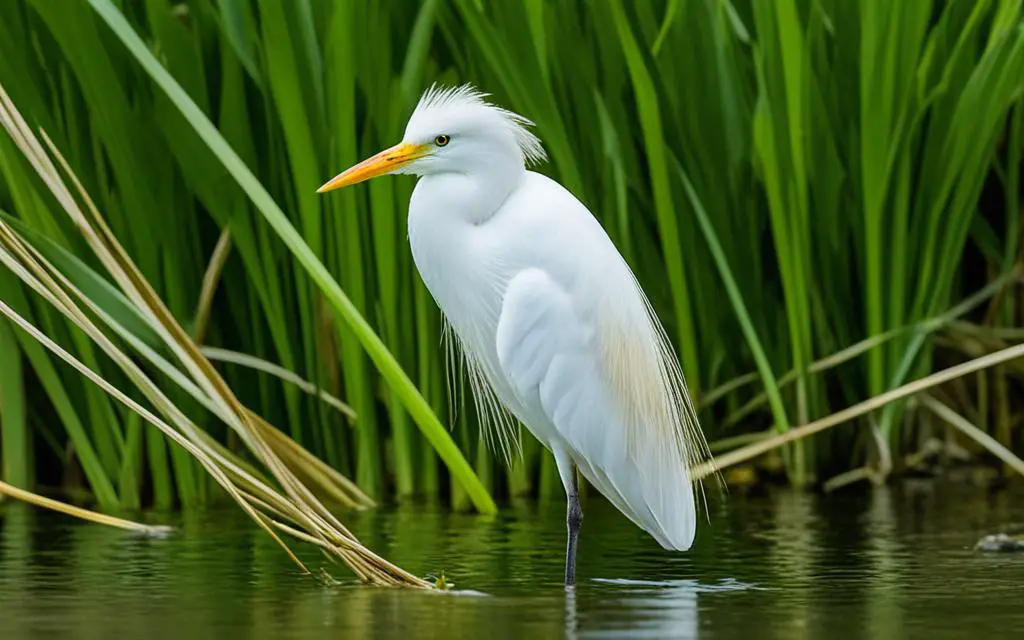
Overall, the presence of cattle egrets in Utah’s wetlands and agricultural areas adds to the diversity of bird species found in the state. Observing these graceful herons during birdwatching excursions offers birding enthusiasts a chance to witness their unique feeding and nesting behaviors.
Snowy Egret
The snowy egret is an elegant white heron with lacy plumes during the breeding season. They can be found in marshes, ponds, lakes, rivers, estuaries, and wetlands across Utah. Snowy egrets stalk slowly through shallow water, hunting for small fish, frogs, crustaceans, and insects. They use their bright yellow feet to stir up prey. Snowy egrets nest colonially with other wading birds and lay clutches of 3-5 eggs. These herons breed in Utah between April and August. Their numbers were severely impacted by plume hunting in the past but have since rebounded.
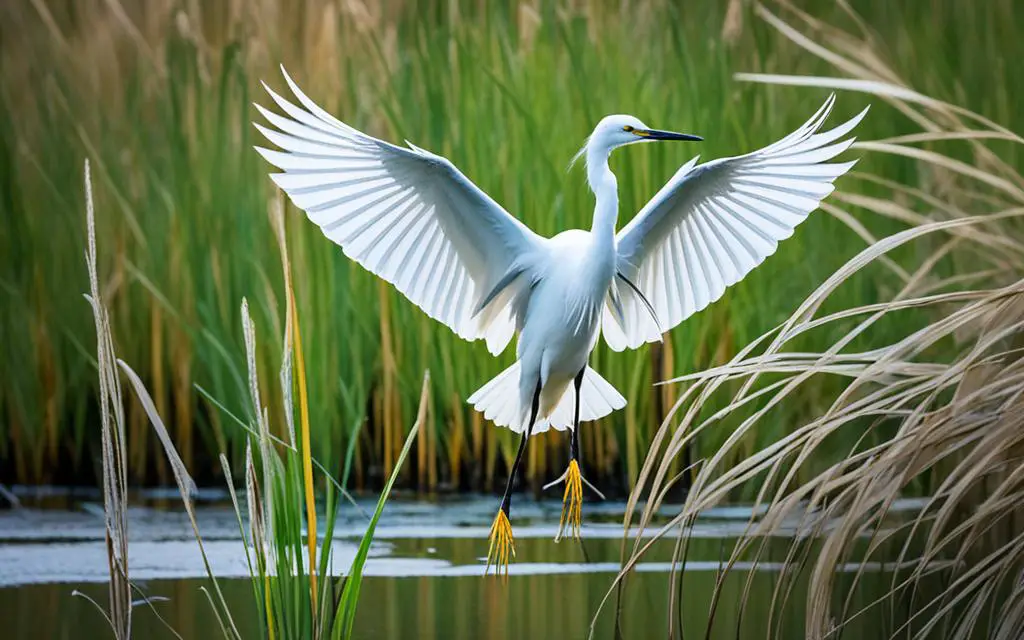
Conservation Status
The snowy egret experienced significant population declines in the past due to plume hunting. The beautiful plumes were highly sought after for the millinery trade, resulting in widespread hunting of these birds. However, with the implementation of protective measures and the banning of plume hunting, their numbers have significantly recovered. Snowy egrets are now listed as a species of least concern by the International Union for Conservation of Nature (IUCN).
Feeding Behaviors
The snowy egret is a skilled hunter, using its slender bill to capture small fish, frogs, crustaceans, and insects. It employs a unique feeding technique by stirring up prey using its bright yellow feet, attracting fish and other aquatic creatures. This behavior, known as “foot-flagging,” disturbs the water, making it easier for the egret to locate and capture its prey. Snowy egrets display remarkable agility and precision during their hunting endeavors.
Nesting Behaviors
Snowy egrets nest colonially, along with other wading birds such as herons and ibises. These colonies are often located in trees or shrubs near water, providing easy access to food sources. The nests are constructed with sticks and lined with softer materials such as moss and leaves. Snowy egrets typically lay clutches of 3-5 pale blue-green eggs. Both parents take turns incubating the eggs and feeding the hatchlings. The strong sense of community within these colonies offers protection against predators and fosters successful breeding.
| Common Name | Scientific Name | Conservation Status |
|---|---|---|
| Snowy Egret | Egretta thula | Least Concern |
Little Blue Heron
The little blue heron is a small, dark slate-gray heron that inhabits wetland areas across Utah. Adults have purplish-maroon heads and necks, while juveniles are completely white. These herons patiently forage in shallow waters, feeding primarily on small fish, shrimp, crayfish, tadpoles, frogs, and insects.
Little blue herons breed in colonies, nesting in low trees or shrubs above water. They are most commonly found in the Great Salt Lake region of Utah. Despite their name, the little blue herons are not true blue herons. They were originally thought to belong to the same genus, but taxonomists later found that they are more closely related to the snowy egret.
Similar to other heron species, the little blue heron is a wading bird known for its long legs that allow it to navigate through marshy environments. It is often seen standing perfectly still, waiting for its prey to come close enough to strike. This behavior, known as “stalking,” is typical of many heron species.
Conservation Status
The little blue heron has a conservation status of Least Concern, indicating that it is not currently facing any significant threats to its population. However, like all wetland birds, it is affected by habitat loss and degradation. The protection and conservation of wetland areas are crucial for the long-term survival of the little blue heron and other wetland bird species.
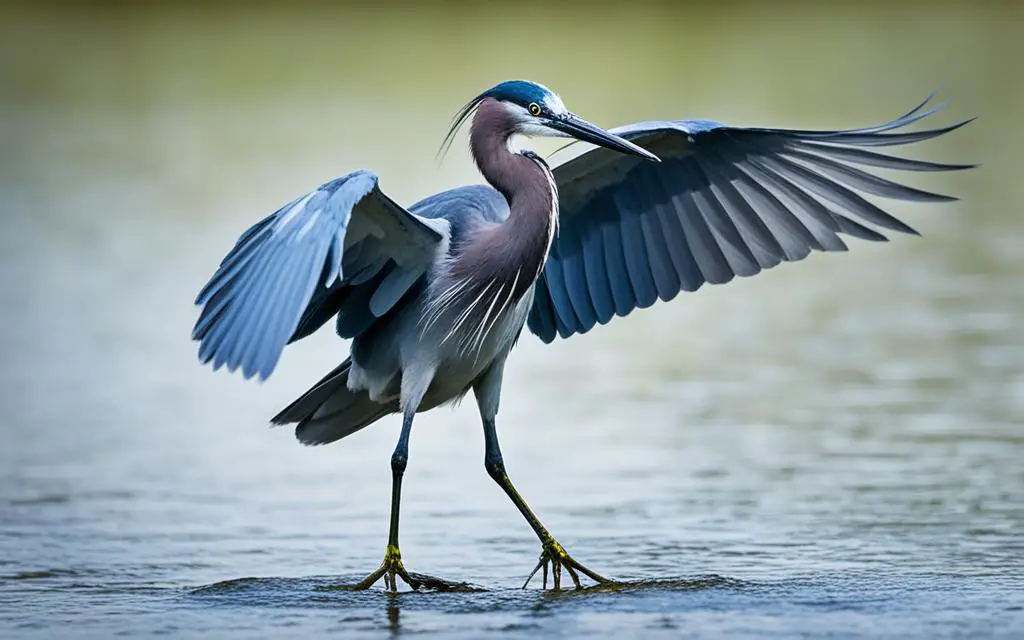
| Little Blue Heron Facts | |
|---|---|
| Scientific Name | Egretta caerulea |
| Size | Height: 22-29 inches Wingspan: 36-42 inches |
| Habitat | Wetlands, marshes, swamps |
| Range | North and Central America, Caribbean |
| Feeding Behavior | Stalks and ambushes prey |
| Nesting Behavior | Colonial nesting in low trees or shrubs above water |
Reddish Egret
The reddish egret is a medium-sized heron with dark reddish-pink plumage during the breeding season. These stunning wading birds can be found in the shallow coastal habitats of Utah, including marshes, tidal flats, ponds, and lakes. Reddish egrets have unique foraging behaviors, often seen running and stirring up prey or standing still and spearing fish, amphibians, and crustaceans. They demonstrate remarkable hunting techniques that make them a delight to observe during birdwatching excursions.
Reddish egrets are known to nest colonially on offshore islands, building their nests close to their feeding grounds. The females lay 2-5 eggs per clutch, contributing to the future generations of this charismatic species. Although reddish egrets were once vulnerable to hunting pressures resulting in declining populations, conservation efforts have led to their rebound. Today, reddish egrets are considered rare summer residents in Utah, mainly along the southeastern shores of the Great Salt Lake.
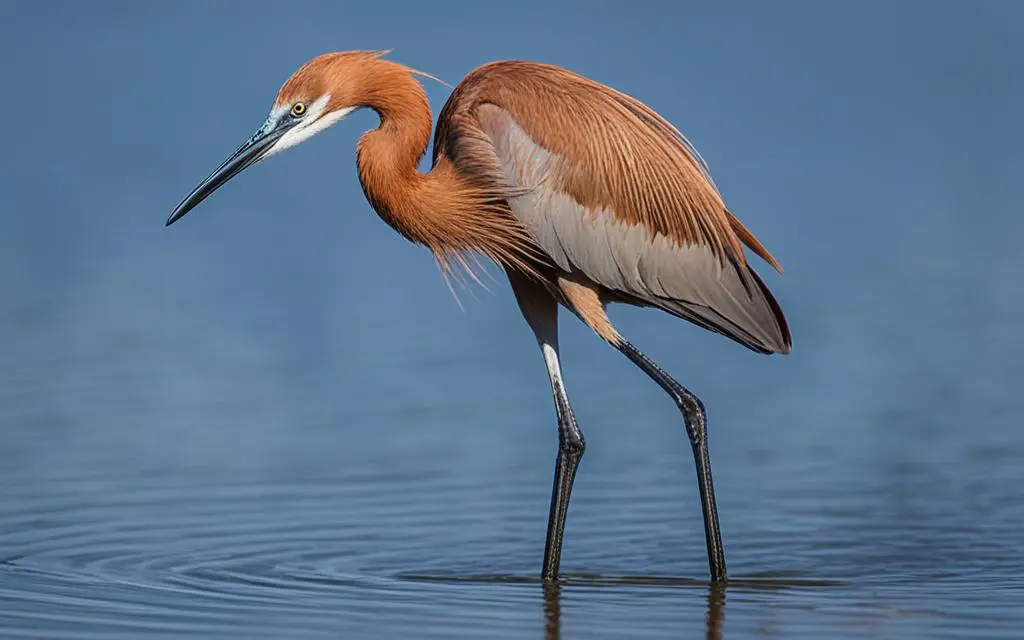
Conservation Status
“Reddish egrets are a success story in terms of conservation. By implementing protective measures and raising awareness about their importance to wetland ecosystems, their populations have recovered from past declines.” – BirdLife International
As with many wetland birds, the reddish egret’s conservation status remains a concern due to habitat loss. The degradation and destruction of coastal habitats pose significant threats to their survival. It is vital to prioritize wetland conservation efforts, safeguarding these essential ecosystems that support a variety of bird species.
Key Features of the Reddish Egret
| Traits | Description |
|---|---|
| Plumage | Dark reddish-pink during breeding season |
| Size | Medium-sized heron |
| Foraging Behavior | Running and stirring up prey or standing still and spearing fish |
| Nesting | Colonial nesting on offshore islands, laying 2-5 eggs per clutch |
| Conservation Status | Recovered from past declines, rare summer residents in Utah |
Witnessing the reddish egret’s stunning plumage and unique feeding behaviors is a true delight for bird enthusiasts and nature lovers. Their presence highlights the importance of wetland conservation to ensure the survival of these remarkable marsh birds in Utah’s rich wildlife ecosystems.
Conclusion
Utah’s wetlands are a haven for a wide variety of heron species, each with its own unique characteristics and behaviors. These magnificent wading birds, such as the great blue heron, green heron, black-crowned night-heron, and more, play a crucial role in the delicate ecosystems of Utah. By familiarizing yourself with the different heron species found in Utah, you can enrich your birdwatching and wildlife experiences in the state.
To preserve the diverse heron families and other wetland birds in Utah, it is essential to prioritize the conservation of their habitats. Wetlands provide the ideal environment for these marsh birds, offering abundant food sources and nesting sites. Protecting these wetland areas from habitat loss and degradation is vital to ensure the survival of these majestic heron species and maintain the overall balance of Utah’s wildlife.
Next time you explore Utah’s wetlands, keep an eye out for these captivating herons. Witness their graceful movements, observe their hunting techniques, and marvel at their unique beauty. The heron species in Utah truly exemplify the charm and vitality of the state’s birdlife.
FAQ
What types of herons can be found in Utah?
Utah is home to several heron species, including the great blue heron, green heron, black-crowned night-heron, yellow-crowned night-heron, cattle egret, snowy egret, little blue heron, and reddish egret.
Where can I find great blue herons in Utah?
Great blue herons can be found year-round in Utah’s wetlands, particularly near marshes, ponds, lakes, rivers, and shorelines.
What do great blue herons eat?
Great blue herons primarily feed on small fish but also consume amphibians, reptiles, small mammals, and insects.
Where can I find green herons in Utah?
Green herons can be found in sheltered wetlands with abundant vegetation, such as marshes, swamps, ponds, and slow-moving streams.
What is the feeding behavior of green herons?
Green herons are known for their patient hunting behavior, where they stand motionless on shore or perch on branches, waiting to strike at small fish, frogs, insects, and other prey.
What habitats do black-crowned night-herons use in Utah?
Black-crowned night-herons use a variety of habitats, including marshes, swamps, ponds, rivers, and lakes.
What do black-crowned night-herons eat?
Black-crowned night-herons primarily feed on insects, small fish, crustaceans, amphibians, and reptiles.
Where can I find yellow-crowned night-herons in Utah?
Yellow-crowned night-herons can be found in freshwater and brackish wetlands across Utah, such as marshes, swamps, mangroves, and shorelines.
When do yellow-crowned night-herons primarily feed?
Yellow-crowned night-herons primarily forage at night, feeding on insects, spiders, crustaceans, fish, frogs, reptiles, and small mammals.
What habitats do cattle egrets prefer in Utah?
Cattle egrets can be found across Utah, often near grazing livestock. They also inhabit wetlands and agricultural fields.
What is the unique association of cattle egrets with domestic animals?
Cattle egrets forage on insects that are flushed by grazing livestock, such as cows.
Where can I find snowy egrets in Utah?
Snowy egrets can be found in marshes, ponds, lakes, rivers, estuaries, and wetlands across Utah.
What is the feeding behavior of snowy egrets?
Snowy egrets stalk slowly through shallow water, hunting for small fish, frogs, crustaceans, and insects. They use their bright yellow feet to stir up prey.
Where can I find little blue herons in Utah?
Little blue herons are most commonly found in the Great Salt Lake region of Utah.
What do little blue herons eat?
Little blue herons feed primarily on small fish, shrimp, crayfish, tadpoles, frogs, and insects.
Where can I find reddish egrets in Utah?
Reddish egrets are rare summer residents in Utah, mainly along the southeastern shores of the Great Salt Lake.
What is the plumage of reddish egrets during the breeding season?
During the breeding season, reddish egrets have dark reddish-pink plumage.
Why is it important to preserve and protect Utah’s wetland habitats for heron species?
Wetland conservation is crucial to ensure the survival of heron species in Utah, as they depend on these habitats for feeding, nesting, and breeding.
Source Links
- https://www.birdadvisors.com/herons-utah/
- https://birdwatchinghq.com/herons-in-utah/
- https://www.hummingbirdsplus.org/nature-blog-network/herons-in-utah/

My name is Shane Warren, the author behind Your Bird Buddy – your ultimate guide to the wonderful world of birds! Unleash your inner avian explorer as we delve into a vibrant library of knowledge dedicated to all things feathered. From learning about diverse bird species from across the globe to understanding their captivating habitats and behaviors, I’m here to fuel your passion for these magnificent creatures. Not only that, but I also provide valuable insights on being a responsible and informed pet bird owner. Join our vibrant community and let’s celebrate the feathered wonders of the world together – one chirp at a time. And be sure to join our Your Bird Buddy Community over on Facebook!

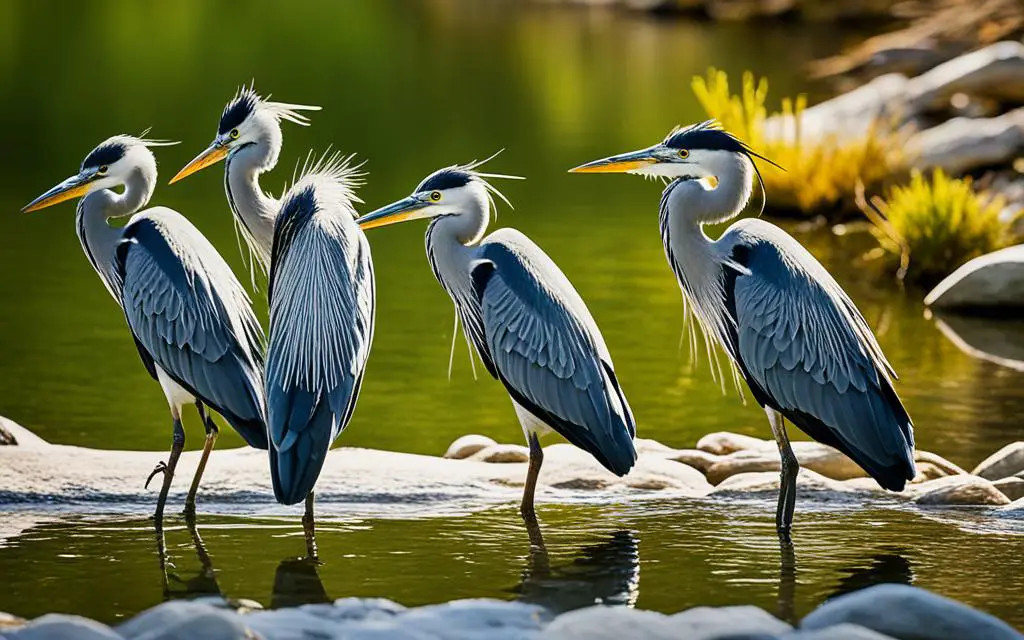
Comments are closed